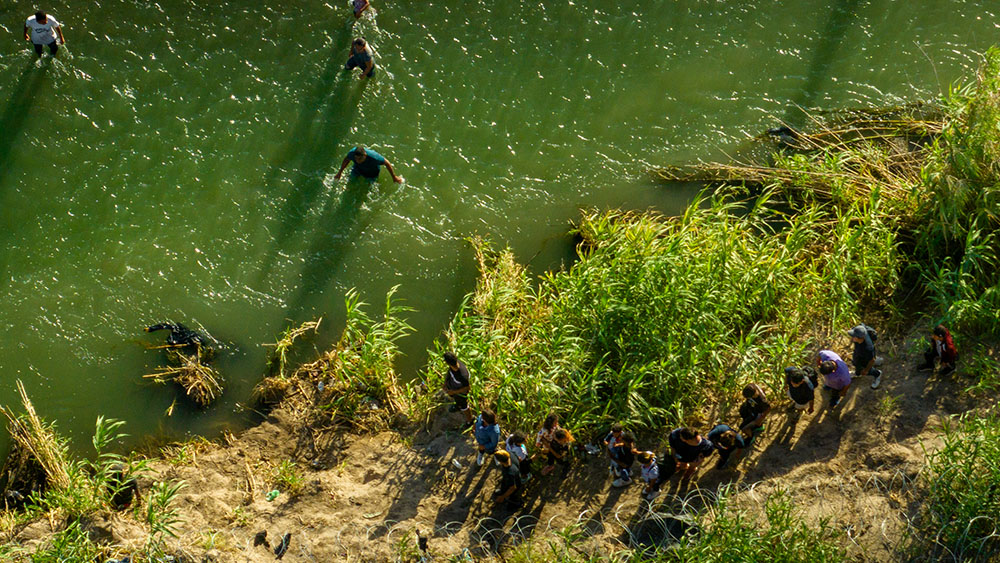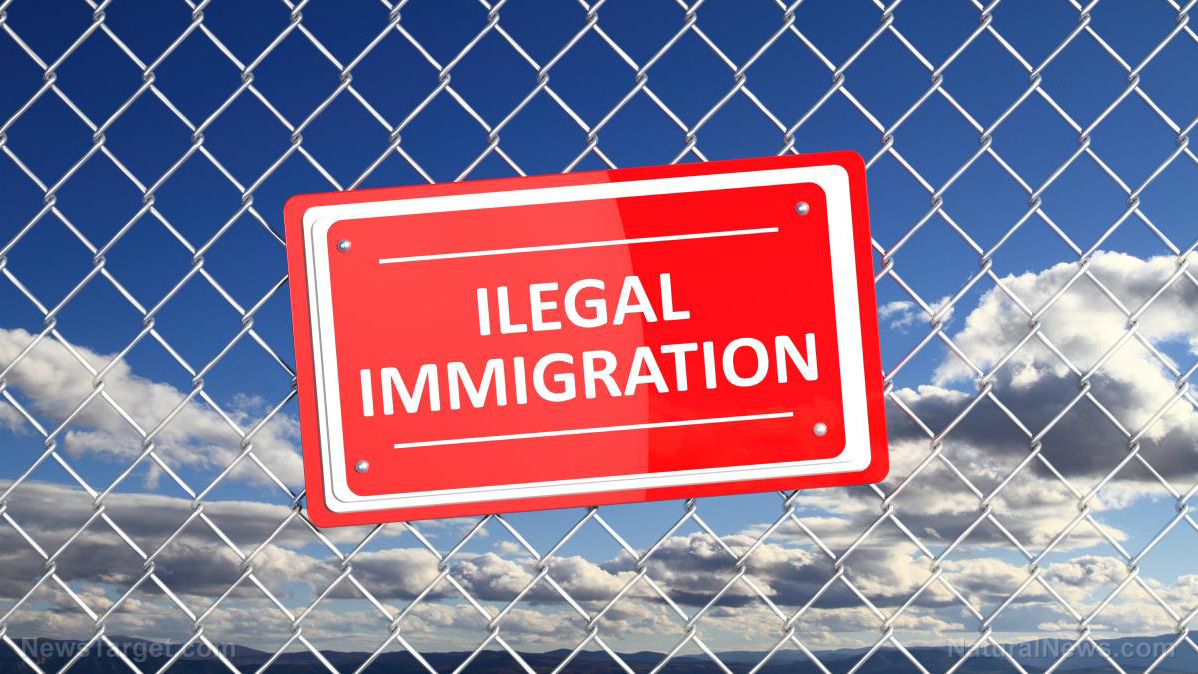 Parler
Parler Gab
Gab
- Trump administration approves 17 miles of waterborne barriers in South Texas’s Rio Grande River to address security gaps.
- Homeland Secretary Kristi Noem waived environmental laws, citing national security as justification.
- Critics argue the move undermines environmental safeguards, echoing opposition from Biden-era legal battles over similar barriers.
- U.S. border encounters hit record lows in June 2025, per new data, though migrant risks persist.
- The push reflects longstanding tensions between federal immigration policies and border state initiatives.
New barriers target "capability gaps" in waterways
U.S. Customs and Border Protection (CBP) framed the project as necessary to address vulnerabilities in waterways rife with smuggling, trafficking and dangerous crossings. “A capability gap has been identified in waterways along the Southwest border where drug smuggling, human trafficking and other dangerous and illegal activity occurs,” CBP stated in a press release. The administration emphasized the barriers would create “safer conditions for patrolling agents” and reduce life-threatening river crossings. Secretary Noem, in a congressional hearing earlier this year, defended such measures as critical to achieving “operational control of the Southern border,” a priority of President Donald Trump’s executive orders. The brown-water obstacles mirror 2023 efforts by then-Texas Governor Greg Abbott, whose buoy installations were blocked under the Biden administration over safety and sovereignty concerns. “We’re going to continue to move forward with that infrastructure because it does slow down traffic, it sends a message and it gives our officers more opportunities to truly address the security concerns we’ve had in the past,” Noem told lawmakers in May.Bypassing environmental laws: A divisive move
To expedite construction, Noem invoked Section 102 of the Real ID Act, which permits the suspension of environmental reviews under national security claims. This is her sixth barrier-related waiver since Trump’s January 2025 inauguration, following a similar action in California in April. Environmental groups condemned that earlier waiver, citing risks to ecosystems and water quality. “Waiving environmental, cultural preservation and good governance laws...will only cause further harm to border communities,” said Cameron Walkup, an Earthjustice advocate. The nonprofit did not immediately comment on the Rio Grande waiver, but Biden-era litigation over Texas buoys — a case dropped after Trump’s election win—hinted at renewed clashes. The administration maintains the barriers save lives while curbing crime. “The numbers don’t lie — under President Trump’s leadership, @DHSgov and @CBP have shattered records,” Noem tweeted in June, citing a historic low of 25,243 border encounters nationwide, down 12% from February 2025.A recurring border standoff
The Rio Grande project revives tensions familiar from the Biden years, when federal and Texas officials clashed over border control. In 2023, Biden’s Justice Department sued Abbott over buoys, arguing state installations interfered with federal jurisdiction. Trump’s reversal of that policy signals a return to state-federal alignment, but critics argue it leaves communities and wildlife at risk. Meanwhile, U.S. border data reveals mixed realities: fewer encounters since Trump’s return but persistent human rights critiques of detention conditions and migrant deaths. As Noem pushes “creative solutions” to the “danger zone” of waterways, the political fault lines remain stark, blending security needs with ecological and ethical imperatives.A divided border: Security vs. environment in the Rio Grande
The 17-mile water barrier project crystallizes America’s unresolved border dilemma: how to balance physical safety with environmental stewardship and humanitarian concerns. Republicans and security hawks applaud the administration’s “ironclad strategy” to curb illicit crossings, citing plummeting totals as proof of effectiveness. Opponents counter that sinking buoys sets dangerous precedents for bypassing laws, even as faith in traditional enforcement wanes in divided Congress. As construction begins, the question lingers: Will the Rio Grande’s new obstacles finally secure the border — or merely deepen the nation’s rift over how to achieve it? Sources for this article include: TheNationalPulse.com NewsMax.com TheEpochTimes.comCalifornia DEFIES Trump administration order to ban transgender athletes from girls’ sports
By Laura Harris // Share
Inflation fears ease, consumer optimism rises as economic outlook improves
By Laura Harris // Share
From the eggs to the courts: A clash over animals, eggs and affordability
By Willow Tohi // Share
Trump open to “bone-crushing” Russia sanctions bill, but only on his terms
By Laura Harris // Share
Governments continue to obscure COVID-19 vaccine data amid rising concerns over excess deaths
By patricklewis // Share
Tech giant Microsoft backs EXTINCTION with its support of carbon capture programs
By ramontomeydw // Share
Germany to resume arms exports to Israel despite repeated ceasefire violations
By isabelle // Share










